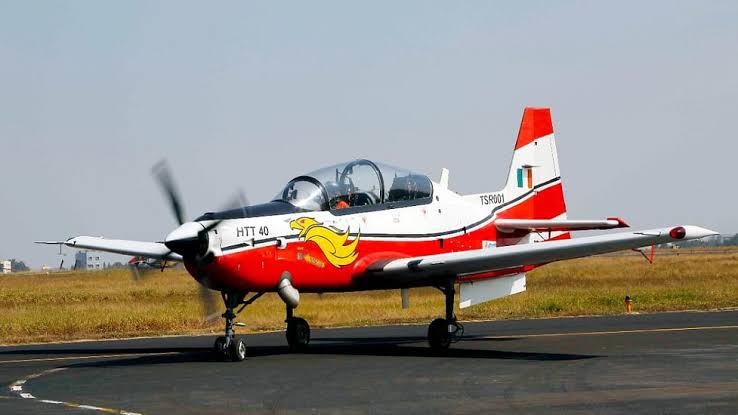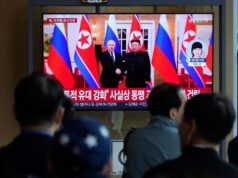IAF Refused sub standard HTT 40 for years : Orders Made-In-India Trainer Aircraft only after all faults fully rectified by HAL

The HTT-40 trainer aircraft development began in 2013, but the progress saw a see-saw battle between the HAL and the IAF over the future of the programme. The IAF just refused to accept a sub standard unproven and unsafe aircraft for training of its rookie pilots in spite of pressure in the garb of MADE IN INDIA. It would have been a disaster.
The HAL had proposed HTT-40 to replace the HPT-32 ‘Deepak’ trainer inducted in 1984, which the IAF had grounded in 2009 after a horrific crash that killed two experienced pilots. This aircraft had been accepted by IAF without adequate trials basically because it was designed and made by HAL. Only after numerous accidents, around 17, which totally claimed 19 lives, it was seen that the aircraft had major design flaws. However due to no funding by the Govt, the IAF had no choice but to continue with it, till 2009, when finally IAF put its foot down firmly.
Preliminary study showed that it was going to take at least a decade to roll out the HTT40 after completing all safety tests. Also it was proving to be very costly. Since rookie pilots coming in from National Defence Academy and the direct entries had to be trained ab initio, HAL’s offer to develop the training aircraft was rejected ( because of cost and time line ) and the Ministry of Defence (MoD) placed orders for 75 Swiss Pilatus PC-7 Mk II trainers. Shri AK Antony, Raksha Mantri, announced that the MoD had signed a Rs 2,900 crore deal for the Swiss aircraft. despite allegations about discrepancies.
However the IAF’s total requirement was of 183 basic trainer aircraft, so even after getting 75 Swiss PC-7s it would still require additional 108 trainers.
So once again HAL proposed that the MoD to buy 108 HTT-40 made in India trainers. IAF was never against the HAL designed trainer but it was not ready to accept any sub standard or unproven aircraft no matter what. Also IAF could not wait FOREVER for HAL to roll out a proven and safe trainer.
So meanwhile IAF was keen to exercise the option clause in the contract of procuring 37 more PC-7s from Switzerland. The first few Swiss trainers from the original order had already been delivered by April 2013. Though there was a shrill campaign to malign the IAF over this preference. As if IAF was in a position to curtail training of its rookie pilots. So If the MoD approved the proposal for additional PC-7s at this stage, the potential order for HTT-40 would have come down to 71 aircraft.
As IAF had no faith in the air worthiness of HTT40, sometime in 2013, it had even asked HAL to build 106 of these Swiss training aircraft in the country under license from Pilatus but HAL was reluctant. To pressurize HAL and also to end its monopoly, in 2014, the IAF floated a new Request for Information inviting Indian companies to submit bids to supply 106 PC-7 Mk II trainers in partnership with Pilatus. It was seen as an attempt to give proper competition to a lethargic defence Public Sector Company.
Soon HAL finally woke up and got cracking to rectify all the short comings on HTT 40. Though in 2015, HAL was in a mood to build 106 PC-7 Mk II trainers in India. However now with focus on ‘Make in India’ under a new BJP-led government, the HAL was told in March 2015 that it would have to develop HTT-40 trainers at all costs or heads would roll.
A little over two years later, in June 2017, the aircraft made its inaugural flight in the presence of the then Defence Minister Manohar Parrikar.
A new young team [at HAL] had taken up the challenge, shedding all previous lethargy. They put in every thing and the aircraft flew within one year. The indigenous content on HTT-40 became close to 80 per cent. Almost 50 per cent of the components on HTT-40 are now manufactured by private players of the Indian aerospace ecosystem.
HTT-40 not only outperformed the Pilatus but also exceeded the IAF’s performance criteria. While the IAF had required a top speed of 400 km per hour, the HTT-40 got tested to 420 km per hour. Moreover, it also exceeded IAF’s ceiling requirement of 20,000 feet by flying to 20,200 feet. It could take off and land in just 800 metres of runway, less than the 1,000 metres limit set by the IAF in the Preliminary Staff Qualitative Requirement.
However without undergoing the critical Spin Trials, HAL in 2019 wanted the MoD to release money for purchase of 106+ Honeywell Garret engines from the USA. This was refused point blank keeping in view the HPT 32 saga.
Trainer aircraft must be capable of entering and recovering from spin as it is necessary to familiarise trainee pilots to identify departure from controlled flight and the actions needed to recover from such situations. Given the high risk involved in conducting this complex manoeuvre, the test progresses incrementally, turn by turn, and requires several flights. HTT-40 finally cleared the “six-turn spin test” later that year.
“For HAL, clearing the HTT-40’s six-turn spin tests removes a monkey from our backs,” HAL’s design chief, Arup Chatterjee, said back then.
Over the years, IAF resisted HALs attempt to foist an unproven the HTT-40 programme just like the earlier HPT32 which had lead to so many unforgivable deaths. No wonder the MoD made the HAL invest Rs 350 crore money from its own budget for the project. Otherwise HAL would have just squandered away this amount had it been given by the IAF.
The programme progressed as now there was accountability demanded by the MoD and the PMO. In fact Narendra Modi government was revamping the entire Department of Defence Production with a ‘Make in India’ push in the defence sector.
In August 2020, the government after receiving concurrence from IAF, finally cleared the procurement of the aircraft, and the IAF issued an RFP for 75 HTT-40s in early 2021, along with a clause that included the option to acquire 38 more.
The Cabinet Committeee on Security has now approved the purchase of 70 Hindustan Turbo Trainer-40 (HTT-40) basic trainer aircraft (BTA).The trainer, designed and developed by Hindustan Aeronautics Limited (HAL), will be built at facilities in Bangalore and Nashik.
The IAF will receive the first batch of two HTT-40 trainers within 20 months, followed by eight and then 20 aircraft annually. The aircraft will be procured at a cost of Rs 6,828 crore over a period of six years.
Rookie pilots of the IAF and the Navy will learn to fly on these aircraft in the first stage of their training. In the second and third stages, the pilots are trained on Kiran Mark II jet and Hawk advanced jet, respectively.




